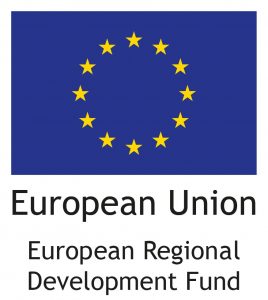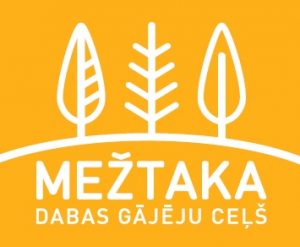Dragon with Staburags wings
I a niche, untypical for the buildings of the city centre I meet teacher Ļubova Ruško. She points to the strange lights that have once lighted the entrance with gas burners, but now serve as a sort of decoration. We enter the building and find ourselves in a vast lobby where, if he can believe Latvian writer Jānis Poruks, guests were once greeted by an upright, stuffed brown bear, with a hung-out bright red tongue and a lamp in his forepaws.
The so-called Ķeniņi Grammar School on Tērbatas Street 15/17 every Rigan has passed by was designed in 1905 by the most prominent architects of the first independence period Eižens Laube and Konstantīns Pēkšēns. The building is one of the first ones built in the style of national romanticism and a wonderful world-scale model of national Art Nouveau, during the construction of which particular attention was paid to national references and material selection. For example, Atis Ķeniņš had wanted travertine shivers of the Staburags rock to be used for the production of the decorative plates of the facade. The window apertures, however, are made with a beveled side, inspired by the Latvian farmsteads.
Teacher Ļuba, as her pupils call her, was born in Latgale, in the harsh winter of 1949. Ļuba was the eldest in the family of six children, and also the main teacher of her younger siblings. As a child, little Ļuba wanted to be a shop-assistant in the local store so she could eat cocoa-strewn caramels. But her destiny was different, and for the past 30 years she has called this building her home as she worked as a teacher of the Latvian language and literature here. In addition to the teacher’s work, Ļubova Ruško is also the author of textbooks and has curated the school museum dedicated to Atis Ķeniņš and Anna Rūmane-Ķeniņa since its foundation. We comfortably settle for our conversation here.
Teacher Luba knows that the building included in the Latvian Culture Canon initially housed Atis Ķeniņš’ Men’s School of Trade and Anna Rūmane-Ķeniņa’s Women’s Grammar School. When times changed, the names of the schools changed as well, but there have always been educational institutions, such as the Grammar School of Riga Lithuanians’ Committee, Riga People’s High School, Russian Special Primary School, and many others. There have also been editorial offices of several newspapers, a printing house, student canteen and even a shooting range.
A bell sounds, indicating the end of a class, a scout’s head appears in the museum’s door and immediately disappears. The news has spread that teacher Ļuba has arrived at school. She’s retired now and is attending school less frequently. Moments later, the museum fills with a bunch of excited children. Everyone wants to draw the teacher’s attention and tell an occurrence from their life. Teacher Ļuba says she gets along with children. She is proud of her school, colleagues and, of course, pupils. This school educates people of the world, as the children here represent more than 20 nationalities, in which each teacher places his own wisdom, creativity, and his ability to adapt to today’s fast and interesting lives, adds the teacher. She stresses that the school environment is designed to develop creative personalities.
The teacher says that the school is known as the Dragon Palace referring to facade elevations that resemble three heads. Rooms with ornate columns and unusually shaped windows, the oval stairs spiralling toward the sky, the spectacular hall on the fifth floor of the building, with its sometimes uncommonly exposed roof structures, are a vivid acknowledgment of the metaphor.
In the early days, among the teachers working at the school along with Atis Ķeniņš and Annai Rūmane-Ķeniņa, there were such celebrities of Latvian culture as Fricis Bārda, Emīls Dārziņš, Kārlis Skalbe, Vilis Plūdons, Jānis Greste and others. The school can be listed among the cultural, language and art centres of the beginning of the 20th century in Latvia, which strengthened the foundations for the restoration of Latvia’s independence.
Only five storeys of the building can be seen from Tērbatas Street, but it is actually eight storeys high. The teacher leads us up to the eighth floor, into a mysterious glass room with a panoramic view of the Freedom Monument and the glorious roofs of Riga. She has invented a game called “Riga Rooftops,” where participants have to guess the buildings each of the visible roofs shelters. Teacher Ļuba jokes that over the years she has memorized, in which house and when the chimney was cleaned, when the roof was changed and which roof terrace is used for celebrations.


